The South Korean government’s policy toward inter-Korean relations has vacillated since a truce halted the Korean War 65 years ago. Nothing has reflected the continuing recalibrations more palpably - and at times proactively - than popular culture, especially movies.
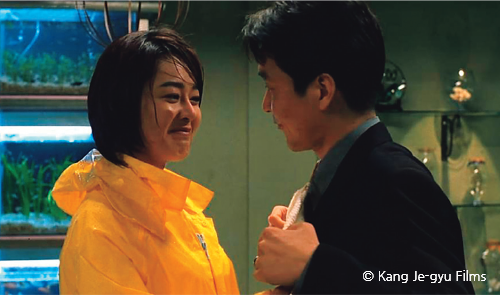
“Shiri” (1999), directed by Kang Je-gyu
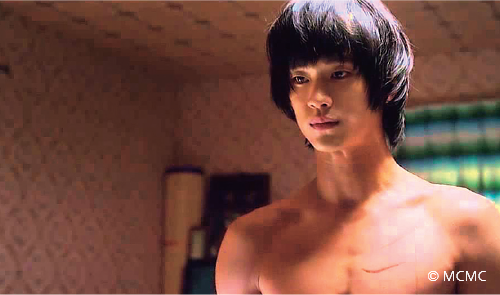
“Secretly Greatly” (2013), directed by Jang Cheol-soo
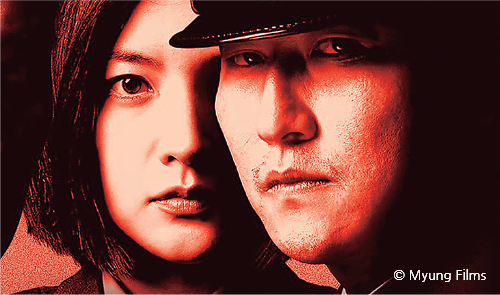
“Joint Security Area” (2000), directed by Park Chan-wook
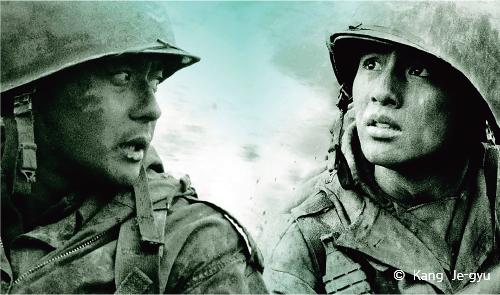
“Taegukgi: The Brotherhood of War” (2004), directed by Kang Je-gyu
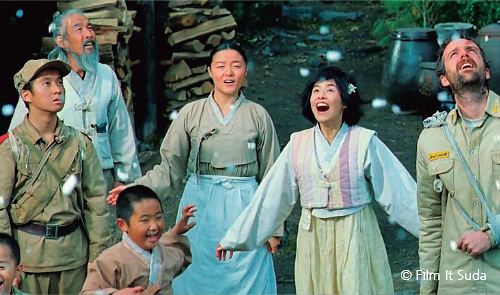
“Welcome to Dongmakgol” (2005), directed by Park Kwang-hyun

“The Berlin File” (2012), directed by Ryoo Seung-hwan
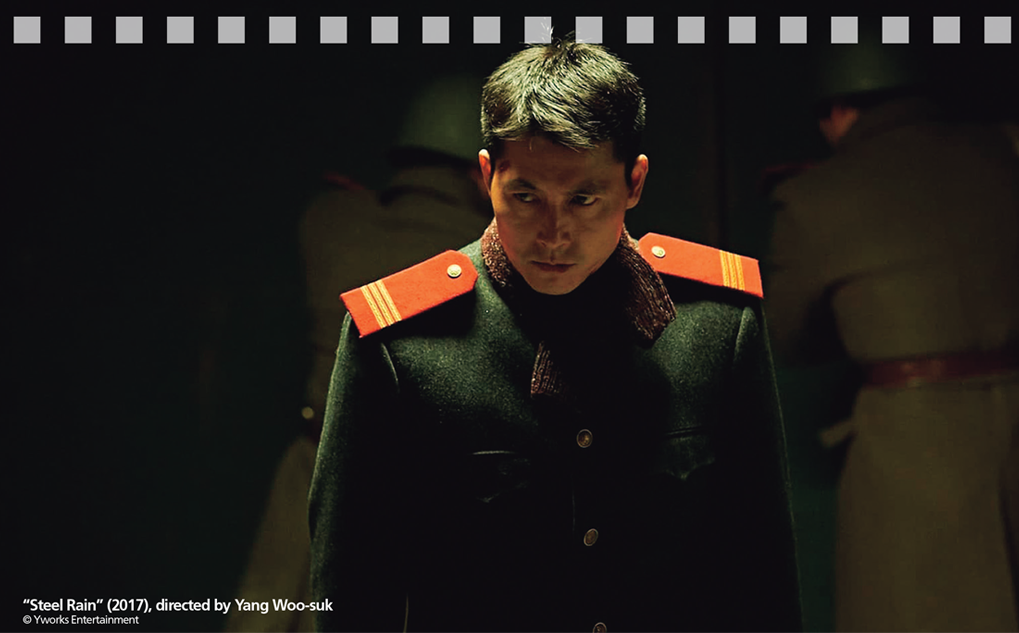
Operatives from the South and North put aside their ideologies to jointly stop nuclear war amid a coup attempt in North Korea.
The history of Korean movies can be divided into the years before and after “Shiri.” As the first mega production of the Korean film industry, it set records in budget allocation (3.1 billion won) and viewers (5.82 million nationwide, including 2.45 million in Seoul). Before the 1999 record setter, the only other movie that had attracted a million viewers in Seoul was the musical drama “Sopyonje,” released in 1993.
The success of “Shiri” showed that there was an appetite for homegrown blockbusters. It ignited the production of Hollywood-style big-budget movies in Korea and transformed local moviemaking into a fast-growing industry.
Why was “Shiri” such a huge commercial success? In a nutshell, it was because of its bold exploration of changing relations between the two Koreas.
New Themes for a New Start
Shiri (also spelled “swiri”) refers to a fish that swims in fresh waters connecting the two Koreas. The movie is an action thriller about the pursuit of North Korean sleeper agents who have terrorized South Korea for six years. The most formidable member of the team is a female assassin who disguises herself and falls in love with her primary adversary.
In the climax, the two Koreas are engaged in sports diplomacy; a football match is held with the leaders of both sides present. The sleepers, determined to shatter the mood of reconciliation, attempt to blow up the stadium. In a deadly gun battle that ends the movie, love between the assassin and her misled pursuer is confirmed even as they point their guns at each other. “Shiri” thus offered an alternative view of North Koreans: fellow Koreans, not simply the enemy.
Dreams about ending the Cold War stepped closer to reality in the following year, when South Korean President Kim Dae-jung traveled to the North to meet his counterpart, Kim Jong-il. It was the first inter-Korean summit since the division of the country in 1945. The icebreaker in 2000 heralded radical shifts in the diplomatic and political climate.Just three months later, “Joint Security Area” (or “JSA,” also known as Panmunjom) hit movie theaters, drawing 2.51 million viewers in Seoul alone. The movie evidently benefited from the afterglow of the historic summit. It revolved around a shooting incident between South and North Korean guards at Panmunjom, a symbol of the standoff between the two Koreas. Investigators are stunned to discover that secret communication and friendly encounters had occurred before the shooting.
The mood in South Korea had changed since the pro-democracy struggle of June 1987 and the inauguration of the country’s first civil government in 1993. Personal freedoms could at last be truly enjoyed. Nevertheless, the 1990s did not see South Koreans’ attitudes toward North Korea change appreciably. Conservatives advocated vigilance and a hardline approach. Progressives championed bridges built on cooperation and trust. The entertainment industry, always mindful of the anti-communist National Security Act of 1948, continued to practice self-censorship.
“Shiri” approached the inter-Korean issue indirectly through embedded killer agents and a love story thrown in. “Joint Security Area” was even more radical, straightforwardly portraying camaraderie between soldiers positioned to kill each other at a moment’s notice. Director Park Chan-wook said at the time, “I was prepared to be arrested because of this movie.” Fortunately, the dramatic realization of the inter-Korean summit shortly before its release set the stage for an impassioned response.
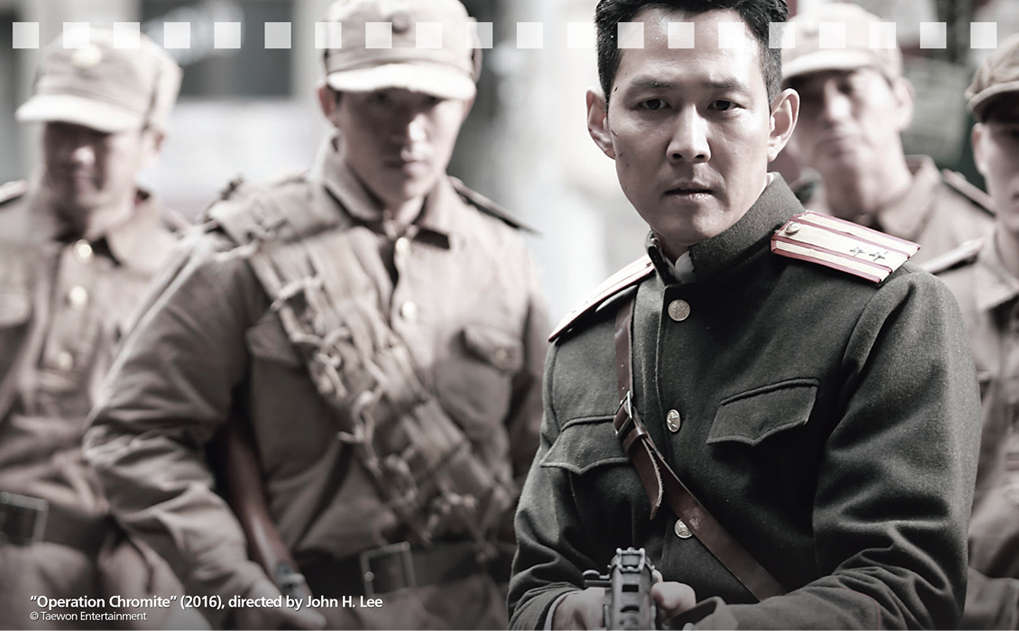
A team of spies gathers intelligence on North Korean defenses before the Incheon Landing, an amphibious assault by U.N. Forces in September 1950, which reversed the tide of the Korean War.
Genre Expansion
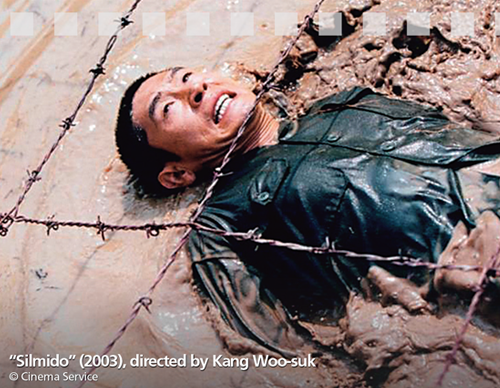
Based on real events, this movie tells the story of a unit of misfits trained to kill North Korean leader Kim Il-sung. It was the first Korean movie to attract more than 10 million viewers.
After 2000, Korean studios turned to the Korean War for their next blockbusters. The emphasis shifted from anti-communist jabs and displays of firepower to characters’ emotions, ideas and relationships. A series of box office hits ensued. The political backdrop was the administration of President Roh Moo-hyun, a liberal politician who inherited the “Sunshine Policy” of cooperation and reconciliation with the North from his predecessor and mentor, Kim Dae-jung.
In 2003, “Silmido” attracted a whopping 11 million viewers, opening the era of the so-called “ten million sellers” for Korea’s burgeoning film industry. Based on true events, the critically acclaimed movie highlighted divisions over how inter-Korean relations should be handled.
A unit of social outcasts, including criminals, was formed in April 1968 to assassinate North Korean leader Kim Il-sung. The project was in response to a failed North Korean attempt earlier that year to assassinate the South Korean president at his residence.
The group, named Unit 684, underwent brutal training on Silmi Island, off the coast of Incheon. But the mission was cancelled as relations between the two Koreas improved. In August 1971, the unit members killed their guards, fled the island and hijacked a bus to Seoul. Most of them were killed in a firefight with army soldiers. “Silmido” portrayed the unit members as pawns in the sharp division of opinions on North Korea policy within the government. Prior to the release of the film, the general public was unaware of Unit 684.
The next year, “Taegukgi: The Brotherhood of War” broke the box office record of “Silmido,” tallying nearly 12 million admissions. Through two brothers the movie depicted how a South Korean family was destroyed by the tragedy of war. Hardened and disillusioned, the older brother crosses over to the North Korean army. The brothers end up pointing their weapons at each other. In contrast to earlier films where North Korean soldiers were always depicted as “commies,” this movie attempted to portray them as ordinary young men just like South Korean soldiers, and indeed as brothers. The message succeeded. Audiences wept.
The 2005 film “Welcome to Dongmakgol” took a humanist approach to war. It revolved around South and North Korean soldiers and a U.S. pilot who end up in a mountain village named Dongmakgol, so isolated that the inhabitants don’t even know there’s a war going on. After accidentally destroying the villagers’ food stockpile, the soldiers feel compelled to help them survive the winter. In the process, hatred recedes and the soldiers begin to treat each other as friends rather than foes. The movie was applauded for its theme and originality. It proved that even a comic fantasy could touch upon the traumatic subject and impress viewers. It broke a quasi-taboo.
After 2000, Korean studios turned to the Korean War for their next blockbusters. The emphasis shifted from anticommunist jabs and displays of firepower to characters’ emotions, ideas and relationships.
Sweeping Commercialization
Fast forward to 2010 and the political environment had changed with conservative Lee Myung-bak as president. Lee was a hardliner against the North, which had continued its nuclear arms development. The “Sunshine Policy” was shelved. Movies about the two Koreas downplayed reconciliation and prioritized ticket sales.
“A Better Tomorrow,” screened in 2010, was modeled on the 1986 Hong Kong classic of the same title directed by John Woo. The remake was titled “Mujeokja” in Korean, meaning a person no one can beat as well as a person with no country. The gangster drama toyed with the preconception and fantasy that all North Korean defectors are killing machines.
“71: Into the Fire” exemplified the commercialization of Korean War movies. The subject was the Battle of the Nakdong River, one of the bloodiest battles of the war and a frequent theme of past anti-communist movies. Though not cut from the anti-communist genre, the movie was not anti-war either. It could be best described as a thoroughly commercial war spectacle.
The only movie that touched on the inter-Korean issue in a genuine way during Lee’s tenure was “The Front Line.” It depicted control of a strategic hill repeatedly being lost and regained by South and North Korean forces. The back-and-forth assaults with short-lived success underlined the futility and recklessness of war.
Secret agents were the stars of 2013 movies with a North Korean theme. It was the first year of President Park Geun-hye, another conservative. A softened approach to the North was not expected from the daughter of Park Chung-hee, the South’s president at the height of the Cold War.
“The Berlin File” and “Secretly Greatly” enjoyed commercial success, reaping 7.2 million and 6.96 million viewers, respectively. “The Berlin File” is the story of a showdown between North Korean spies and South Korean operatives working in Berlin. “Secretly Greatly” is a comedy featuring a motley group of good-looking young spies from the North. Forgotten by the North, the spies become superheroes in the South. Based on a highly successful webtoon, the movie indicated how young South Koreans today can even imagine North Korean spies as handsome heartthrobs.
Subsequent movies dealing with North-South relations remained commercially orientated, adhering to genre blueprints. In these movies, North Korean soldiers were indeed depicted as “killing machines.” A notable feature was a conservative tilt, though not quite anti-communist fare. Chief among them were “Northern Limit Line” released in 2015 and “Operation Chromite” in 2016.
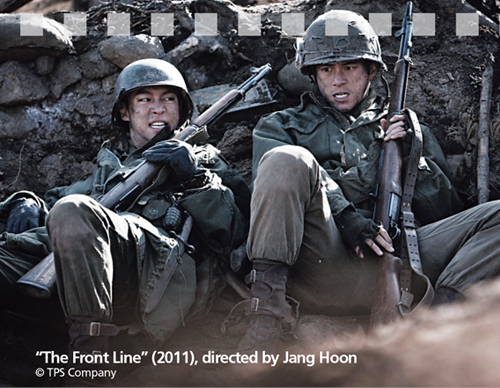
One of the more insightful movies during the hardline Lee Myung-bak administration, it depicts the futility and recklessness of war through the last battle before the Korea War armistice.
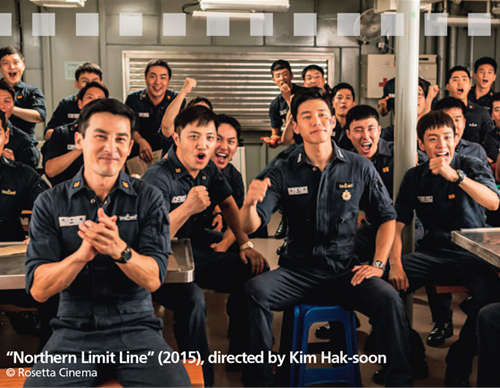
Reflecting the hardline view of conservatives, this film describes the naval battle between North and South Korea at their de facto maritime border in June 2002.
Based on a real naval battle between North and South Korea in June 2002 off Yeonpyeong Island in the West Sea, “Northern Limit Line” hit six million admissions. A controversy over government control of content preceded production as it was widely expected that the film would adopt a conservative slant. The result was proof that even ideology could be commercialized. Soldiers went to see the movie in large groups and the number of screens, 667 on the opening day, increased to 1,013 within the first five days.
“Operation Chromite” depicted the bold gamble to land U.S. troops in Incheon during the Korean War to cut invading North Korean forces into half. In one scene, a North Korean army officer points his weapon at his family members because they do not share his ideological view. He is portrayed as the epitome of evil. In contrast, U.S. General Douglas MacArthur is treated as a god-like being. Rather than the misery of war the movie focused on catharsis for the victors. Owing obviously to the commercialization of ideology and the spectacle of war, the movie attracted seven million viewers.
Cinematic Imagination and Reality
The 2017 film “The Fortress” took audiences back to the second Manchu Invasion, or Byeongja Horan, in 1636. Released amid rising tensions over North Korea’s nuclear missile tests, the polarized sentiment exhibited centuries ago underscored the angst of the present day.
Set in Namhan Mountain Fortress where the court of Joseon took refuge, the film revolved around the fierce debate between Kim Sang-heon, leader of the faction arguing for battle against the Qing invaders, and Choe Myeong-gil, leader of the faction advocating peaceful settlement. Their arguments mirrored the opposing views of the conservatives and progressives on North-South relations.
At the end of 2017, months after President Park Geun-hye was impeached on corruption charges and replaced by progressive Moon Jae-in, “Steel Rain” hit theaters. Koreans were hopeful at the time, anticipating a thaw in inter-Korean relations under President Moon. Nearly 4.5 million tickets were sold.
The heroes of the film are two agents from the South and North who realize that tragedy is caused not by threats from the enemy state but by the ambitions of those who exploit national division for power. They lay aside their respective ideologies and team up to stop nuclear war. Audiences were taken not so much by the visual spectacle but the humanism shown by the two agents.
When the changes in movies dealing with inter-Korean relations are traced, there emerges an alignment with the North Korea policy pursued by successive governments. The confrontation and cooperation explored by movies has reflected the different approaches of conservative and progressive administrations. In turn the views and values highlighted on the silver screen have impacted South Koreans’ attitudes toward North Korea - how it should be perceived and handled.
Indie Movies on North Korean Defectors
The virtue of independent movies is their honest handling of subjects that areignored in commercial offerings. A handful of indie movies about North Korean defectors delve intothe problems that they face when attempting to assimilate in capitalist South Korea.

“The Namesake” juxtaposes the realities faced by two women, a North Korean defector struggling to settle in the South and a South Korean woman suffering under patriarchal conventions.
Released at the end of 2017, “The Namesake” features two women who have the same name but pronounce it differently because of linguistic differences between the two Koreas.
Ryeon-hui is a scarred soul, having lost her daughter during their escape from North Korea. She fled because it was too hard to survive there but realizes that life in South Korean society is by no means easy. Ryeon-hui ekes out a living by working part-time at a convenience store. There, she must endure customers and co-workers looking down on her - a typical experience of North Korean defectors in the South.
Yeon-hui’s life is difficult, too. Her escape was from home, to get away from her violent father. She finds the world to be a cold place. She is pregnant but does not know who the father is.
The poster for the movie says, “A woman who fled her home; A woman who fled her country,” likening the fate of North Korean defectors to the fate of South Korean women living in a patriarchal society.
Camaraderie in Isolation
Ryeon-hui catches Yeon-hui trying to steal a triangle-shaped gimbap (a wedge of rice wrapped in seaweed) from the store. That first encounter leads to a new friendship just before Yeon-hui gives birth, and Ryeon-hui finally begins to free herself from recurring anguish over losing her child.
The movie shows how two women meet in different states of isolation and form a bond to overcome their problems. Through their encounter, it also overlays the issue of North Korean defectors with gender issues that have recently come to the fore around the world.
“Myung-hee,” which caused a minor sensation when it was entered in the Mise-en-scène Short Film Festival in 2014, takes a different approach to the subject by following the daily life of a North Korean defector in ary style. Common to almost all defector movies is a description of a horrific escape and risky journey to the South. However, this movie simply shows a woman who has become part of South Korean society.
The film opens with a fairly commonplace scene, an exercise class. Myung-hee, dragged there by a friend, meets and befriends Su-jin and soon begins to go to her clothing store every day to help. She neither asks nor expects to be paid.
For Myung-hee, not being compensated for her labor is not an issue. “In the North, we had to go outside and crush stones in the middle of winter,” she says, regarding her work at the shop as a simple act of friendship. But as others see it, she has no concept of economics. Myung-hee begins to see things differently when her friends ask, “Are you Su-jin’s slave?”
The highlight comes when Myung-hee finally blows up in front of her friends: “I risked my life to come here, but I didn’t come to be treated like this by you.” This forthright statement uncloaks the tacit disdain and pity with which North Korean defectors are treated in the South.
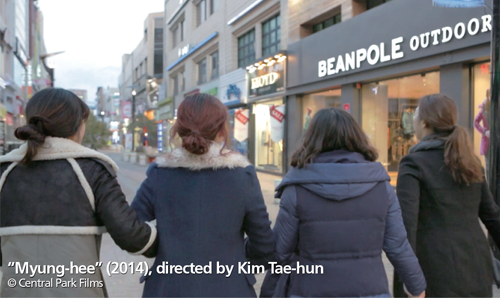
“Myung-hee” depicts the conflict between a North Korean defector and people around her, arising from differences in their way of thinking and concepts of economics.
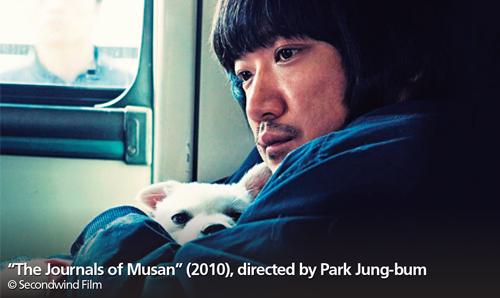
Winner of many international film awards, “The Journals of Musan” sheds light on the plight of North Korean defectors from a neorealist perspective.
International Response
Another notable film is “The Journals of Musan,” which won 16 awards at various international film festivals. These include the Tiger Award and International Federation of Film Critics Award at the International Film Festival Rotterdam, the Best Feature Film Award at the Andrey Tarkovsky International Film Festival in Russia and the Best First Feature Film Award at the Toronto Reel Asian International Film Festival. In explaining its unanimous vote for “The Journals of Musan,” the Toronto jury lauded the protagonist’s honest and inspiring spirit of survival and the way the raw but moving story revealed a North Korean refugee’s struggle to find his way in a new environment.
The international accolades garnered by “The Journals of Musan” can be attributed to its neorealist view of the world. While ostensibly recording the daily struggle for survival waged by Jeon Seung-cheol, a defector from Musan, North Hamgyong Province, the film sheds more light on the reality faced by him. In doing so, it illuminates the hardships of those living on the fringes of South Korean society because they are poor or have no assets. Musan is the name of the protagonist’s hometown, but musan in Korean also means “propertyless.”
Living day to day pasting posters on walls, Seung-cheol has scant hope for a better life. Exposed to verbal and physical abuse on a daily basis, his life in South Korea remains a perilous survival test. His only modicum of relief is the church, where all are considered the children of God, and an abandoned puppy, whose lot in life is much like his own.
Kim Man-cheol, a North Korean who escaped to the South with his family on a small boat in 1987, said at a press conference soon after his arrival that he had sailed toward “a warm country in the South.” But no such warm country welcomes Seung-cheol; awaiting him is a gritty reality and a tireless struggle for survival.